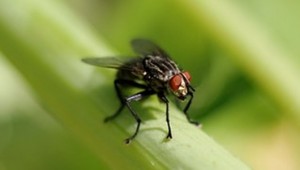Copyright © 2009- 2022 I Know A Guy LLC. All rights reserved.
FLIES
Cluster flies, face flies, house flies
Cluster Flies, Cluster
A very common and unfortunate experience. Many people throughout North America have to experience with each year, is the Invasion of the Cluster Flies. They are scientifically known by the name Pollenia Rudis. Their little habit as mature flies is to hide and survive the cold months of winter. Emerging in spring or warm winter days.
Hundreds of flies at the window or is it the flies covering a wall in your home. They fly around aimlessly landing on any surface possible. In the evening swarming to light fixtures. It’s an invasion they are everywhere. Thankfully these critters can be eliminated relatively easily with simple practices.
Call today for help with this pest.
215-253-6019 or 610-624-3196
24hr. Emergency service @ 267-507-iKAG (4524)
*Emergency service rates apply.
Identification
Flies and Sanitation
Flies that are similar
Treatment options.
Pictures
Identification
For example, another habit they have is flying into your face or plopping down on your shirt. These are pretty sluggish fliers, particularly when they are first coming out of the hiding places and don’t dodge things in front of them very well. Falling onto a surface to rest.
Flies and Sanitation
Most importantly, the Cluster Fly is not particularly discriminating in its choice of winter abodes. On the other hand, aside from choosing a place where it can hide. Whereas the “filth” flies such as the House Fly or the shiny Blow Flies are looking for dead animals or rotting garbage. The Cluster Fly does not seek such habitat for its own larvae. As it turns out, the larva of the Cluster Fly (the “maggot” stage) eats earthworms.
Because they are not breeding in some unsanitary conditions that can be cleaned up. The control of Cluster Flies cannot take place at the larval level, as most other kinds of fly control will require.
Flies that are similar
A similar often mistaken species of fly is called the Face Fly. For instance, does the very same thing, although its larvae live in animal and livestock droppings. Sanitation steps that can be taken to minimize the populations of adults. The Face Fly is a close relative of the House Fly and is recognized by its shiny appearance, The ideal solution for keeping any unwanted living organism from invading your home is to close off those places that they enter.
Treatment options.
In short, these flies may be present in large numbers and are likely inhabiting hidden areas that you cannot easily get into. We specialize in pest elimination have a variety of handy tools to use for this pest.
Moisture is a serious need for most insects. In the case of cluster fly, they can infest walls that hold water without proper drainage. This includes damp basements and crawls spaces.
In the fall season, you may find several flies on the outside wall of your home. This is an early indication that they are looking to use your home for their winter hibernation location. Proper elimination is only provided by proper identification.
Pictures



